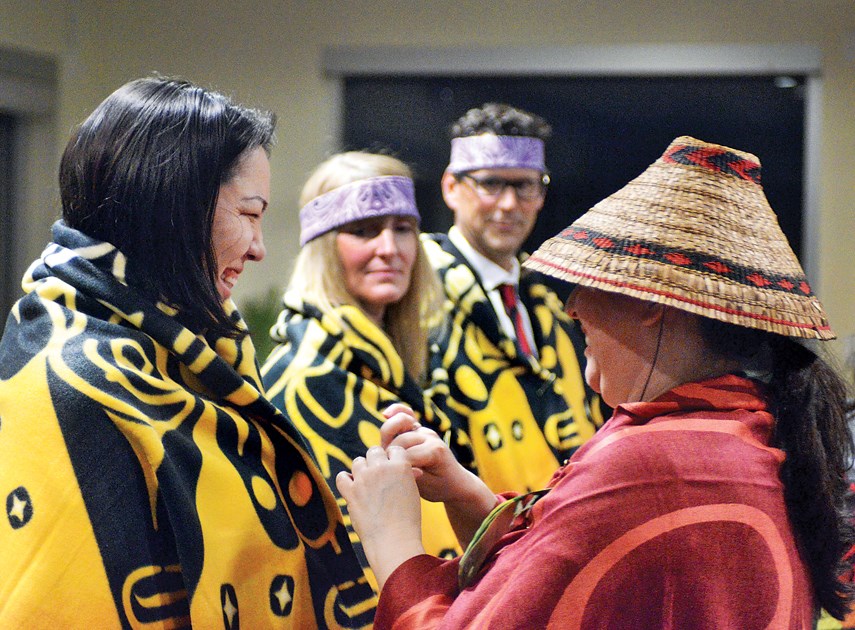The North Vancouver School District and the Squamish Nation have signed a formal agreement that set out how the two governments will collaborate to improve education for Indigenous students in North Vancouver.
The agreement “raises the bar” for both the school district and the Squamish Nation in supporting both the academic success and sense of belonging of local First Nations students, said Brad Baker, district principal of Indigenous education.
Key to the deal is an agreement to collaborate on how the school district will spend the approximately $1.3 million in annual funding earmarked for aboriginal education. The school district receives $1,200 in extra funding from the province for each of the approximately 650 Indigenous students in North Vancouver – representing about four per cent of the student population – earmarked to provide extra supports.
The school district also budgets additional money specifically for that purpose.
About 260 Indigenous students in North Vancouver identify as Squamish Nation while about 70 are from the Tsleil-Waututh Nation. Other Indigenous students attending school in North Vancouver are from other First Nations. (Provincewide, indigenous students make up about 11 per cent of the school population.)
Among the terms of the agreement are an emphasis on the continued inclusion of Squamish Nation language, culture and history in courses offered in the school district, meetings between the two governments to discuss how to ease transitions like the start of elementary and high school, and students’ ability to include a First Nations advocate in discussions with school administrators.
Baker said the agreement builds on previous aboriginal enhancement agreements in place at the North Vancouver School District which set goals including increasing the graduation rates of indigenous students, the number meeting expectations in core academic subjects and participating in high school trades and apprenticeship programs.
Baker said that work has paid off – boosting the graduation rates of Indigenous students from around 20 per cent one and two decades ago to 68 per cent today.
Making schools a welcoming place for Indigenous kids and their families has been important in that success, said Baker. “We’ve seen a dramatic improvement in our sense of belonging. More kids are staying in school.”
Including Indigenous ways of understanding the world in the mainstream curriculum is important for the wider community as well, he said.
Baker said that’s come a long way from his earlier days as a teacher in the district when he taught Indigenous studies as a segregated program to only First Nations students. “It’s important for all students,” he said.
These days, that’s expanded even further to include events like a parent education night on the residential school system.
While the agreement signed this month is just with the Squamish Nation, Baker said the school district hopes to sign a similar agreement with the Tsleil-Waututh Nation as well. Measures put in place to help those students also apply to about 250 Indigenous students who aren’t members of those local First Nations.
According to provincial ministry of education statistics, more indigenous students in North Vancouver live off-reserve than on-reserve. According to those same statistics, about one quarter of students in the school district’s alternative education programs self-identify as Indigenous.
About 200 students with special needs are First Nations, compared to just under 1800 non-aboriginal students.



